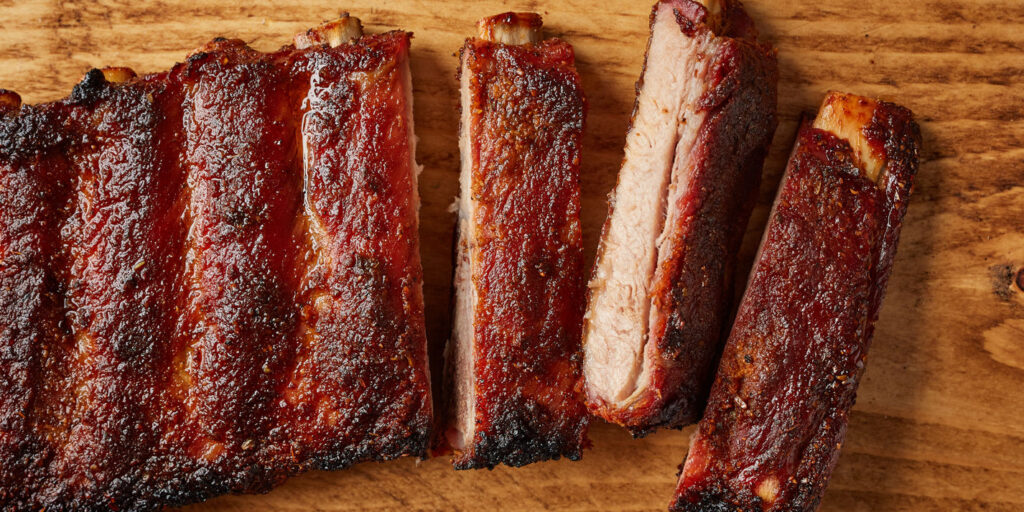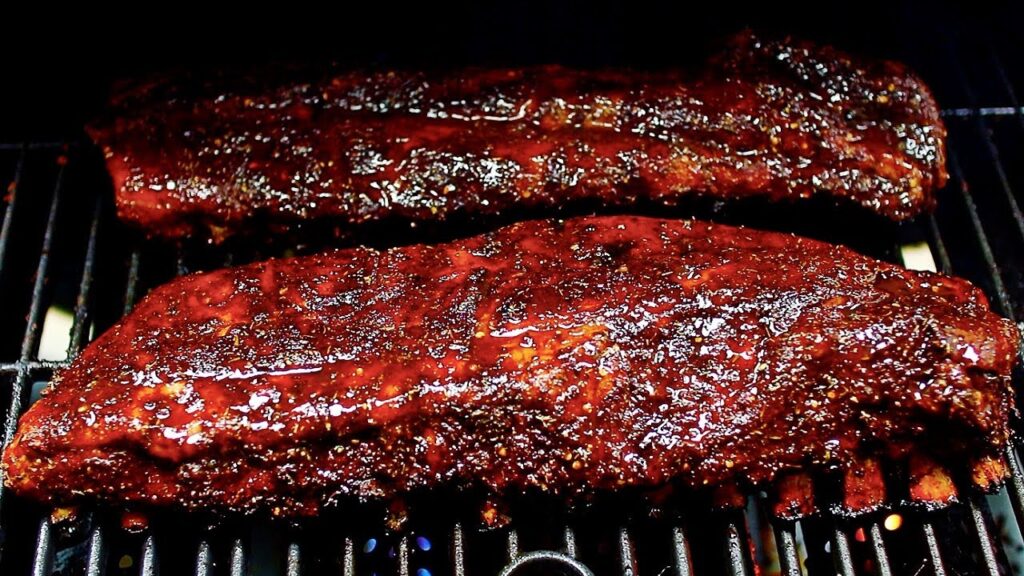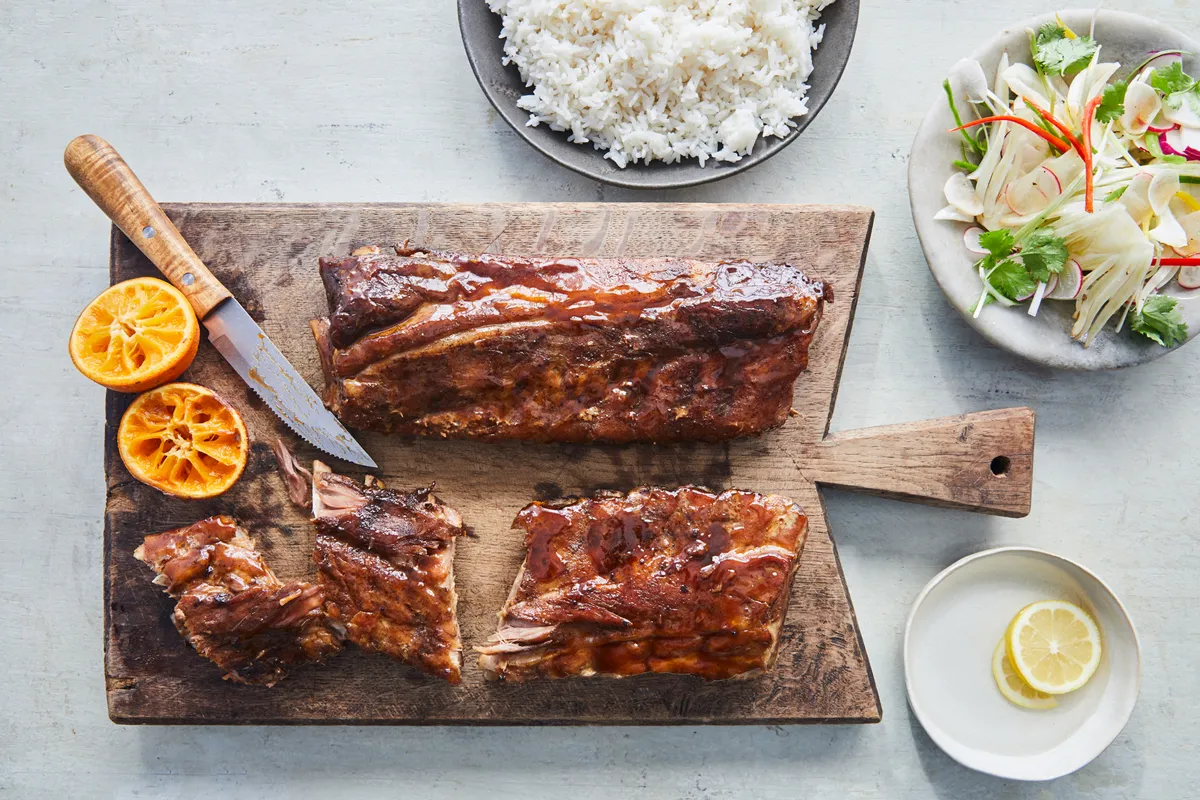Are you tired of serving up bland, overcooked ribs at your backyard BBQs? Do you dream of impressing your friends and family with a mouthwatering, fall-off-the-bone masterpiece? Look no further! In this ultimate guide, we’ll take you on a journey to master the art of grilling perfect BBQ ribs in 2024.

Understanding the Anatomy of a Great Rib
Before we dive into the cooking process, let’s talk about the importance of selecting the right type of ribs.
You’ve got your choice between baby back ribs, St. Louis-style pork ribs, beef ribs, and lamb ribs.
For this guide, we’ll focus on pork ribs, as they’re the most popular and versatile option.
The Cut of Ribs
When it comes to pork ribs, there are two main types: baby back ribs and St. Louis-style pork ribs.
Baby back ribs are shorter and meatier, making them ideal for smaller gatherings or for those who prefer a more delicate rib experience.
St. Louis-style pork ribs, on the other hand, are longer and meatier, offering a more robust flavor and texture.
The Role of Meat Quality
The quality of your ribs is crucial to achieving that perfect grilled flavor.
Look for pork ribs with a good balance of fat and meat.
Avoid ribs with too much fat, as they can become too greasy during cooking.
Opt for pork ribs with a slightly pinkish tint to ensure they’re fresh and full of flavor.
The Magic of Dry Rubs
A good dry rub can make or break the flavor profile of your BBQ ribs.
A dry rub is a mixture of spices, herbs, and other seasonings that add depth and complexity to your ribs.
When choosing a dry rub, consider the type of flavor you want to achieve.
Do you prefer sweet and tangy, spicy and smoky, or classic and savory?

The Importance of Marinating
Marinating your ribs is an essential step in achieving that perfect grilled flavor.
A good marinade should contain acid (such as vinegar or citrus), oil, and spices.
Acid helps break down the collagen in the meat, making it tender and fall-off-the-bone delicious.
Oil helps keep the meat moist and flavorful, while spices add that extra layer of depth.
The Art of Grilling
Now that your ribs are prepared, it’s time to fire up the grill! Preheat your grill to medium-low heat (around 225°F).
Place your ribs on the grill bone-side down and close the lid. Cook for 2-3 hours, or until the meat starts to pull away from the bone.
The Science of Temperature Control
Temperature control is crucial when grilling perfect BBQ ribs.
Aim for an internal temperature of 190°F to 195°F (88°C to 90°C) for optimal tenderness and flavor.
The Secret to Tender Ribs
So, what’s the secret to tender ribs? It’s all about patience! Allow your ribs to cook slowly over low heat, allowing the collagen to break down and the meat to become tender.
The Role of Wood Smoker
A wood smoker can elevate your grilled ribs from good to great.
Look for woods like hickory, applewood, or cherrywood for a sweet and smoky flavor.
Finishing Touches
Once your ribs are cooked, it’s time for the finishing touches.
Brush them with your favorite BBQ sauce (we recommend a sweet and tangy sauce) and return them to the grill for an additional 5-10 minutes.
Tips and Tricks
Use a meat thermometer to ensure optimal internal temperature.
Don’t overcrowd your grill; cook in batches if necessary.
Keep an eye on your grill temperature; adjust as needed.
Don’t press down on the ribs with your spatula; let them cook undisturbed.
Experiment with different dry rubs and marinades to find your perfect flavor combination.
Conclusion
With these tips and tricks under your belt, you’re ready to take your grilled BBQ ribs game to the next level.
Remember, patience is key when cooking perfect BBQ ribs.
Take your time, follow these guidelines, and you’ll be rewarded with fall-off-the-bone tenderness and a flavor that will leave your guests begging for more.

Frequently Asked Questions (FAQs)
Q: What type of wood should I use for smoking my BBQ ribs?
A: Hickory, applewood, or cherrywood are all great options for adding a sweet and smoky flavor.
Q: How do I know when my ribs are done?
A: Check for an internal temperature of 190°F to 195°F (88°C to 90°C) or until the meat starts to pull away from the bone.
Q: Can I use different types of protein for my BBQ ribs?
A: Yes! You can use beef or lamb instead of pork for a different twist on traditional BBQ ribs.
Q: How do I store leftover BBQ ribs?
A: Store leftover BBQ ribs in an airtight container in the refrigerator for up to 3 days or freeze for up to 2 months.
Q: Can I make ahead my dry rubs or marinades?
A: Yes! Prepare your dry rubs or marinades ahead of time; just be sure to store them in an airtight container in the refrigerator until ready to use.
